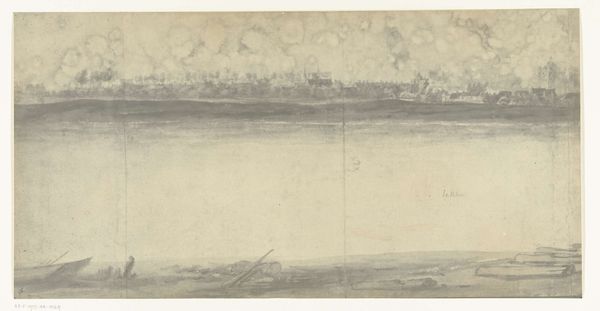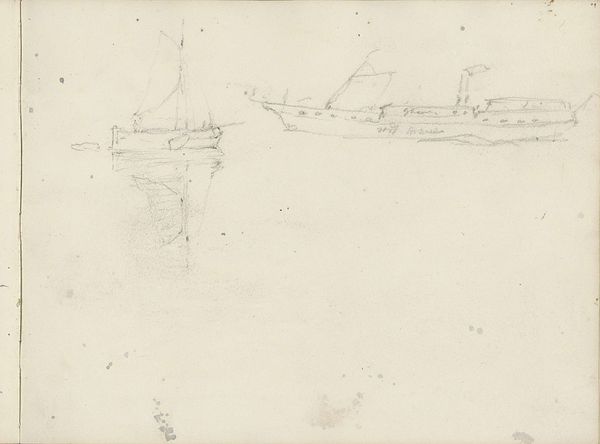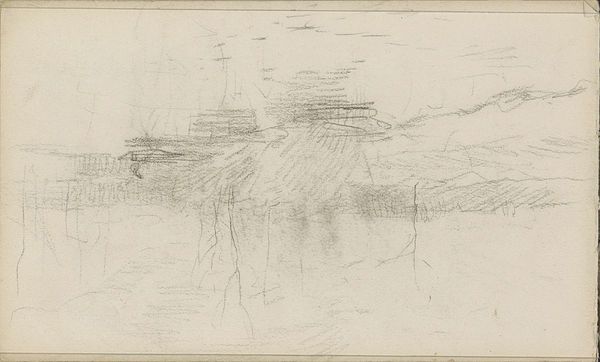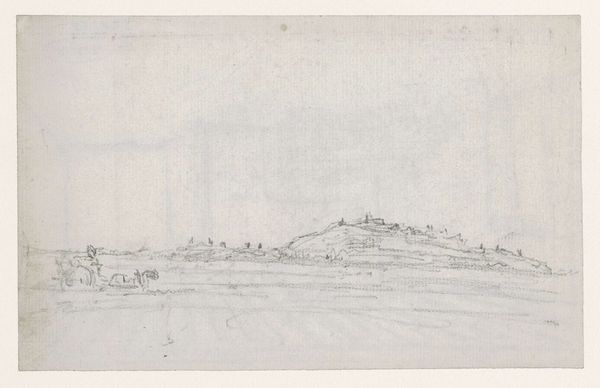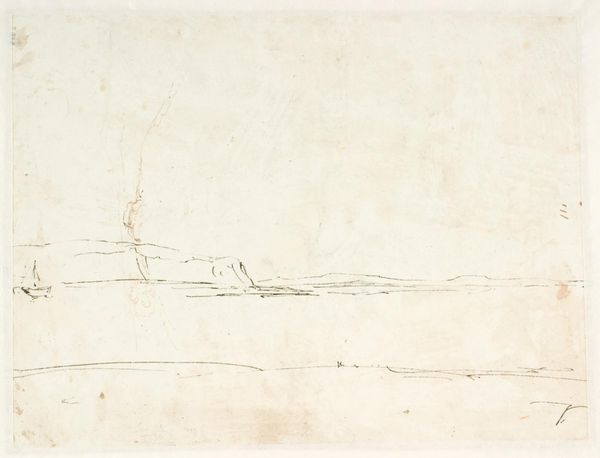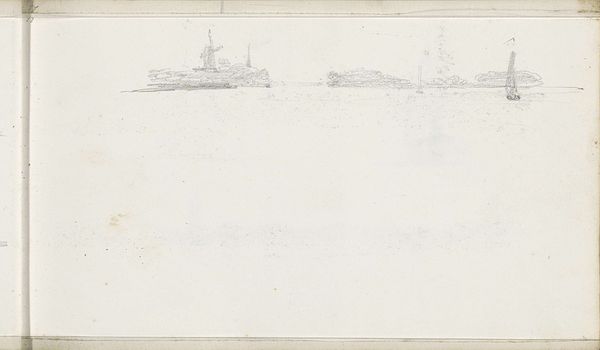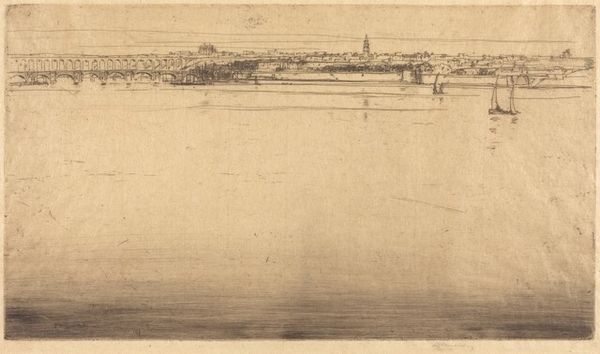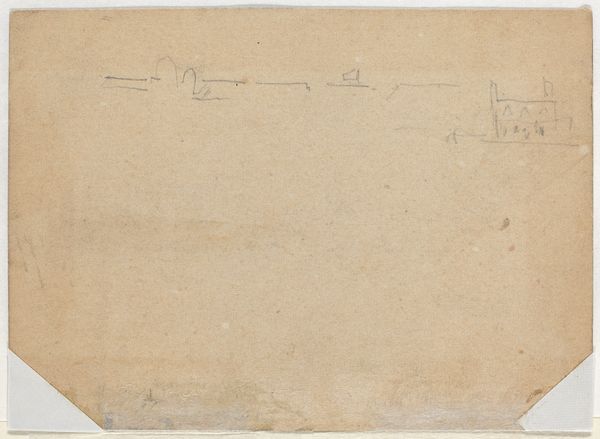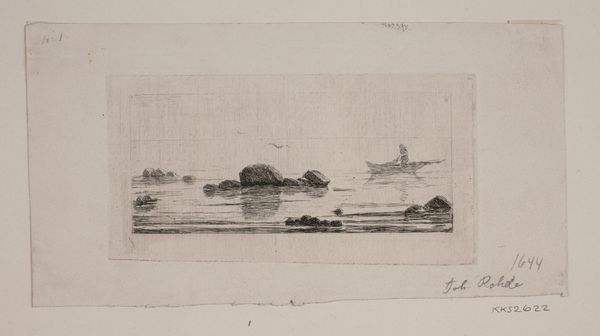
drawing, pencil
#
drawing
#
pencil sketch
#
landscape
#
etching
#
pencil
#
cityscape
#
realism
Dimensions: height 172 mm, width 294 mm
Copyright: Rijks Museum: Open Domain
Editor: This ethereal pencil and etching drawing is titled 'Gezicht op het Huis te Gennep, 1672,' though created between 1900 and 1903, and is attributed to the frères Moreau. I am fascinated by its quiet simplicity, the softness of the pencil on the page. What do you see in this seemingly unassuming sketch? Curator: I see a document rooted in materiality, its creation a dance between intention and the intrinsic qualities of pencil and etching. Notice how the artists employed these materials to render the "Huis te Gennep," challenging the assumed hierarchy between high art and craft. Editor: Challenging? In what way? Curator: The choice of readily available, 'lowly' materials like pencil and etching democratizes the subject. Etching, particularly, lends itself to reproduction, potentially reaching a wider audience beyond the elite. Consider the labor involved—the repetitive strokes, the biting of the acid. The image becomes a record of a specific process, not just a picturesque view. How might its availability in a time influenced by the industrial revolution change how we appreciate craft? Editor: I hadn't considered that. It feels more like a sketch, preparatory. Curator: Precisely! It blurs the lines between preparatory sketch and finished work, raising questions about value and consumption in art. It emphasizes process, asking what we expect of art and artistic skill when its constituent parts are ordinary items. It challenges preconceived notions, as you would also note in cityscapes in this era that are similarly challenging aesthetic definitions through everyday materials. Editor: That's really interesting. I was so focused on the castle, the subject itself, but focusing on materials opens a whole new perspective. Curator: Exactly. Focusing on how it was created, from what and by whom, reshapes our appreciation of even the simplest image. We moved beyond aesthetics, understanding its materiality, and saw it in light of socio-historical production contexts. Editor: Thank you; I see the sketch now with entirely different eyes!
Comments
No comments
Be the first to comment and join the conversation on the ultimate creative platform.

